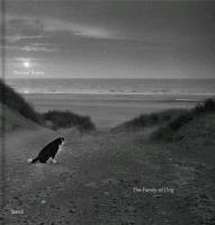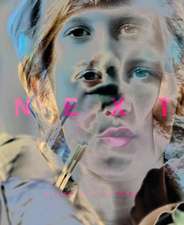Ansel Adams, The National Parks Service Photographs: Tiny Folio
Autor Ansel Adams Introducere de Alice Grayen Limba Engleză Hardback – 30 iun 2004
Din seria Tiny Folio
-
 Preț: 74.82 lei
Preț: 74.82 lei -
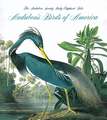 Preț: 70.21 lei
Preț: 70.21 lei - 11%
 Preț: 379.29 lei
Preț: 379.29 lei -
 Preț: 68.68 lei
Preț: 68.68 lei -
 Preț: 68.93 lei
Preț: 68.93 lei -
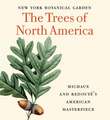 Preț: 75.01 lei
Preț: 75.01 lei -
 Preț: 68.93 lei
Preț: 68.93 lei -
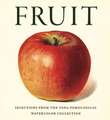 Preț: 68.99 lei
Preț: 68.99 lei -
 Preț: 68.73 lei
Preț: 68.73 lei -
 Preț: 69.46 lei
Preț: 69.46 lei -
 Preț: 68.78 lei
Preț: 68.78 lei -
 Preț: 61.76 lei
Preț: 61.76 lei -
 Preț: 62.83 lei
Preț: 62.83 lei -
 Preț: 66.78 lei
Preț: 66.78 lei -
 Preț: 69.05 lei
Preț: 69.05 lei - 19%
 Preț: 28.20 lei
Preț: 28.20 lei -
 Preț: 59.55 lei
Preț: 59.55 lei -
 Preț: 68.46 lei
Preț: 68.46 lei - 20%
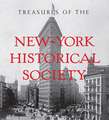 Preț: 55.20 lei
Preț: 55.20 lei - 24%
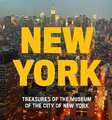 Preț: 50.75 lei
Preț: 50.75 lei - 21%
 Preț: 53.59 lei
Preț: 53.59 lei - 20%
 Preț: 55.20 lei
Preț: 55.20 lei - 20%
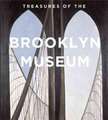 Preț: 55.20 lei
Preț: 55.20 lei - 6%
 Preț: 65.00 lei
Preț: 65.00 lei
Preț: 69.09 lei
Nou
13.22€ • 13.79$ • 10.99£
Carte disponibilă
Livrare economică 28 februarie-14 martie
Livrare express 13-19 februarie pentru 22.87 lei
Specificații
ISBN-10: 0789207753
Pagini: 352
Dimensiuni: 109 x 117 x 30 mm
Greutate: 0.31 kg
Ediția:Revised
Editura: Abbeville Publishing Group
Colecția Abbeville Press
Seria Tiny Folio
Locul publicării:United States
Cuprins
Introduction by Alice Gray 6
Kings River Canyon, California 22
Grand Canyon National Park, Arizona 64
Native Americans and Their Lands 112
Zion National Park, Utah 162
Saguaro National Monument, Arizona
Death Valley National Monument, California
Carlsbad Caverns National Park, New Mexico 180
Boulder Dam, Colorado 208
Rocky Mountain National Park, Colorado 222
Grand Teton National Park, Wyoming 256
Yellowstone National Park, Wyoming 276
Glacier National Park, Montana 318
Bibliography 350
Index 351
Notă biografică
Ansel Adams (1902–1984) is the author of more than a dozen books and one of the most prolific and highly acclaimed photographers of the twentieth century. He helped establish the department of photography at New Yorks Museum of Modern Art and founded The Friends of Photography in Carmel, California, and the Center for Creative Photography at the University of Arizona in Tucson. A member of the board of directors of the Sierra Club for thirty-seven years, Adams was instrumental in the growth of the American conservationist movement.
Alice Gray is a writer and editor based in Louisville, Kentucky. Her work has appeared in such publications as Art & Auction and ARTnews.
Extras
As artist and activist, Ansel Adams (1902-1984) exerted perhaps the greatest single influence on the concept of an ideal American wilderness. Many of the dramatic, evocative photographs of the western American landscape that Adams produced during his lengthy career are now national icons; his poetic vision of nature frames contemporary debates about the intersection of art and -environmentalism. Adams would undoubtedly be pleased that his work continues to inspire artists and conservationists alike, although he claimed he had never consciously made an environmentalist photograph. Coming of age in the 1930s, Adams was a man of his time and an adherent of the modernist dictum that a work of art should express, above all, the artists feelings about his subject. To that end, he distinguished between assignments "from within"-images he felt compelled to create and assignments "from without"-the commercial jobs he accepted in order to make a better living. Adams welcomed any opportunity to hone his craft and so felt that his commercial projects aided in the development of his creative work, although he clearly preferred the latter. He was among the first and firmest believers in photography as a fine art and not merely as a documentary tool. In 1941 Adams was offered an assignment "from without" that directly engaged his inner sensibility, one that not only required technical virtuosity but also called upon his self-expression as artist, conservationist, and citizen: he was asked to photograph the national parks, monuments, Indian lands, and reclamation projects administered by the Department of the Interior. The results, reproduced here, represent a pivotal moment in the artist's life and work; they illustrate the culmination of his early innovations and the later direction of his celebrated career. The invitation to become photo-muralist for the Interior Department was issued by Secretary of the Interior Harold Ickes, who became aware of Adams's work during the 1930s. By 1941 a number of painters had already been commissioned to paint murals on the walls of the new Interior Department building; no photographers were originally included in the Mural Project (as the undertaking was called) because few people then judged photography to be on a par with painting. Ickes, however, had seen a mural-screen depicting a close-up of leaves and ferns that Adams had exhibited in 1936 and had been so impressed with it that he had purchased it for his office the following year. The secretary had also met Adams in 1936 when the photographer came to Washington to lobby Congress for the creation of a national park in Kings River Canyon, California. Adams had been photographing this region of the Sierra Nevada since the 1920s, and his portfolio of majestic images of this towering, snow-capped mountain range with its tree-lined valleys and clear streams (plates 2-23), dating from the mid-1920s to mid-1930s, swayed a number of public officials. Kings River Canyon was made a national park in 1940, and when Adams signed on as photo-muralist for the Interior Department, he agreed to donate the prints he had shown to the government in 1936 as part of his assignment. The earliest correspondence between Adams and the Interior Department suggests that he was to contribute only a few photographs to the Mural Project. Adams, however, felt that the national parks warranted thorough documentation, and he eventually convinced Ickes to expand his job. Finally, in October 1941, Adams embarked on a photographic journey that would last until the following summer and would take him to California, Arizona, New Mexico, Utah, Colorado, Wyoming, Montana, and Washington; he was paid the highest rate the government then gave to "outside consultants": $22.22 per day plus expenses. It was agreed that Adams would give his prints to the Interior Department but would retain control of the negatives so as to supervise their final printing, and that he would be free to pursue other personal or commercial projects while en route through the West. The Mural Project was the ideal assignment for Adams in 1941 because it would allow him to express many of his strongest, most defining convictions. The inextricable link between Adams's art and his favorite subject-the American West-had first been forged in Yosemite National Park in 1916. Fourteen-year-old Ansel arrived in Yosemite on a family vacation away from his San Francisco home armed with his first camera, a Kodak Box Brownie. Amid the dark forests and sweeping mountain skyline, Adams fell in love with the wilderness and with his ability to capture it on film. He would return to Yosemite every year thereafter, eagerly photographing the new world he was discovering through his own eyes and the camera lens. Adamss formal education ended when he graduated from the eighth grade. An exceptionally bright and active child, he did not thrive in the classroom but undertook his own pursuits with remarkable zeal. In 1915 his father gave him an unlimited pass to the Panama-Pacific Exposition in San Francisco; this was Adams's classroom, and he was particularly taken with the art galleries and photographic displays. At the time, however, Adams's primary interest was music, and he continued to train as a concert pianist until 1930, when a fortuitous encounter with the renowned photographer Paul Strand convinced him that photography, rather than music, was his true calling. A prodigiously talented pianist, Adams found similarities between music and photography very early on, and for some time he attempted to pursue both professions. Throughout his life he likened the tonal values in a photograph to musical notes. "The negative is comparable to the composer's score and the print to its performance," he would say. His photographic career began in earnest in 1919, when he spent the first of many summers working in Yosemite, initially as custodian of the Sierra Club Lodge and then as a guide for the Sierra Clubs month-long treks through the parkland. Adams documented these outings and began developing his own aesthetic while photographing Yosemites glorious vistas. Ansel found love in Yosemite, too, for it was here that he met and eventually married Virginia Best, whose father ran Bests Photographic Studio in the park. In 1937 Ansel, Virginia, and their two children moved to Yosemite, having inherited the studio from Virginias late father. Although Adams traveled a great deal, and would later settle in Carmel, California, Yosemite National Park remained his spiritual home. It was in Yosemite, marveling at the massive granite face of Half Dome under a moonlit sky or the arabesques of snow-covered tree limbs in the orchard (plate 1), that Adams became convinced of the importance of the wilderness. In the tradition of Walt Whitman and Ralph Waldo Emerson, Adams believed in the spiritually redemptive power of the untouched landscape, feeling that human beings best understand their world and themselves if they see themselves in proportion with, rather than in opposition to, nature. In his numerous letters and articles supporting conservation efforts, Adams consistently identified the "intangible qualities" of the wilderness as those values that must be safeguarded for future generations. He not only promoted the ecological benefits of environmentalism but also stressed that people have a profoundly spiritual need for nature. It was this spiritual connection between the Earth and its inhabitants that Adams sought to express in his photographs and that he hoped would convince others of the necessity of preserving national parks. The Mural Project offered Adams the chance to pursue these goals on a greater scale than ever before: by creating wall-size images of the national parks, he would share the beauty of the American land with the public while promoting conservation and exploring new technical and thematic approaches to his art. By the time Adams signed his contract with the Interior Department and headed toward Arizona's Grand Canyon National Park, 1941 had already been a landmark year for him. On New Years Eve, 1940, the first department of photography at a fine-arts institution had opened at the Museum of Modern Art in New York, largely owing to the efforts of Adams, curator and writer Beaumont Newhall, and philanthropist David McAlpin. Back in California, while teaching at the Art Center School in Los Angeles, Adams developed the "Zone System," a revolutionary method of regulating the exposure and development of negatives in order to maximize the photographers control of the final printed image. According to the Zone System, light is divided into eleven zones (zero is pure black, medium gray is five, and white is ten). After determining the range of contrast in the subject, the photographer assigns the areas of light and dark in the image to the appropriate zones and then exposes and develops the film according to the desired intensity of tone. This technical innovation, now a staple of photography, facilitated Adams's aesthetic practice, which he termed "visualization." The basic component of Adams's "expressive photography," visualization requires the photographer to capture his response to a particular scene, not simply reproduce the landscape before him. The fall of light, the play of shadows, the line of the horizon, the angle of a tree line or rock formation, should all express what the photographer feels about the view. Adamss visualization was a working method derived from his beloved mentor Alfred Stieglitz's credo that photographs are the visual equivalents of emotion and perception. The Zone System simplified and codified the technical steps necessary for the manipulation of light and shadow in a visualized image, and Adams used this system skillfully in the photographs he took for the Mural Project. The dark ravines in Adams's views of the Grand Canyon (plates 24-25, 29-30, 37-40) have been rendered fathomless and awe-inspiring by the photographer's own vision of how he saw, or rather interpreted these massive, curving forms stretching out to a rocky horizon. Adams photographed certain areas over and over again, changing position, lens, or filter, or sometimes altering the horizon or the shadows only slightly, striving to capture the exact image (or images) in his mind. In his close-ups of the Grand Canyon, the ravines and rocks become almost abstract studies (plates 40-43); Adams was less interested in verisimilitude than in focusing on his own reactions to the world around him. The Mural Project photographs include several examples of nearly identical views of the same subject, suggesting both the depth of Adams's response to these landscapes and his driving desire to fully document his vision. The dynamic, towering white sprays of water in the Old Faithful Geyser series (plates 144, 157-64) are at once incisive studies of a natural phenomenon at work, a photo essay on the modulations of light (the photographs were taken at various intervals at dawn and dusk), and an abstract rendering of a kinetic vertical form. Adams's manipulation of light and tonal values produced some especially dramatic cloud-covered mountainscapes of Grand Teton National Park (plates 135-43), Rocky Mountain National Park (plates l22-23, 130), and Glacier National Park (plates 171, 180- 82). In "Near Teton National Park" (plate 135) and "In Rocky Mountain National Park" (plate 123) thick, dark-shadowed clouds dominate the scene, stretching from foreground to background, pressing down on the landscape below. The enveloping blanket of clouds and fog in "In Glacier National Park" (plate 182) brings the viewer into immediate contact with the mountain range, heightening the viewers sense of being deeply connected to the land, the sky, and the elements. Clouds serve as effective backdrops in Adams's sweeping panoramas, such as his well-known "The Tetons-Snake River" (plate 137) and his views of St. Marys Lake (plate 171), Logan Pass (plate 179), McDonald Lake (plates 184- 86), and Two Medicine Lake (plate 183) in Glacier National Park. In these images, clouds fill out the horizon, complement snow--covered peaks, or balance shimmering water in the foreground. Light behind the clouds either softly illuminates the scene (plate 185) or pierces through the shadows in brilliant rays (plate 137), and the mountains rocky crags, the trees bristling branches, and the waters rippling surface are all carefully delineated, forming a rich tapestry of textures. In these photographs each element is uniquely rendered and balanced within the whole, just as in music (as Adams might say) each note in a perfect chord is played with distinctive accuracy to achieve a harmonious overall sound. Such astounding detail was imperative in Adamss panoramic views, for he believed that a photograph must be as "straight" as it is expressive. In 1932 Adams was one of the founders of the California-based f/64, a group of photographers that also included Edward Weston and Imogen Cunningham, who united to resist the prevailing pictorialist tradition in photography. The group took its name from the smallest aperture setting for the camera lens, the one that allows the greatest depth of field and thereby provides for extremely sharp detail in the final print. Adams and his f/64 peers wanted to create clear, straight photographs that resembled photographs, not the soft-focus images the pictorialists made, which tried to approximate the painterly effects of drawings or etchings. As true modernists, the f/64 photographers believed that no artwork should be modeled on or copied from the form of another, and therefore photographs should be evaluated solely within the terms of their own medium. Adams emphasized his commitment to "pure" photography in the proposal letter he sent to First Assistant Secretary Burlew at the Interior Department on August 10, 1941, when negotiations for the Mural Project were gaining momentum:
Negatives from which the murals will be made should all be of consistent quality. A unified aesthetic point of view is of the utmost importance. A photograph, because of its intense realism, must be completely accurate in mood and factual relationships. . . . Photo-murals, because of the obvious limitations of the medium of photography, must be simpler-either purely decorative (like the screen in Secretary Ickess office) or forcefully interpretive. I do not believe in mere big scenic enlargements, which are usually shallow in content and become tiresome in time.
This devotion to accuracy is as evident in Adamss close-ups as it is in his larger views. Pictures of leaves (plate 175), lichen (plate 176), ferns (plate 174), cactus (plate 83), as well as several studies of underground rock formations (plates 91, 100, 107-9) convey the same scientific precision and spiritual wonder that the expansive, endless landscapes offer. Adams believed passionately in a reflexive relationship between the Earths micro- and macrocosms-that all the marvels of creation are mirrored in its smallest elements; a single leaf or a tiny fragment of terrain illuminates the glories of nature as wondrously as the whole range of the Sierra Nevada. The Mural Project gave Adams the chance to expand on another of his favorite themes, man in relation to nature. In Colorado, Arizona, and New Mexico, Adams photographed the villages and ancient settlements of the Native Americans, illustrating, in part, how the Indians have lived in harmony with the environment. His photograph of the Canyon de Chelly (plate 48) shows the remains of an Anasazi village literally growing out of a stone cliff and nestled against a protective wall of streaked rock that curves gracefully, forcefully skyward. Abundant foliage fills a portion of the foreground, underscoring the organic connection between this past civilization and its ecosystem. The cliff dwellings in Mesa Verde National Park (plates 53-57) are also seen as part of their mountainous environment; the simple rounded and rectangular towers dotted with windows look as ageless and inimitable as the rocky peaks and ravines near which they were built. In Adams's photographs of the Indian villages at Walpi, Arizona (plates 71-72), and Acoma Pueblo, New Mexico (plates 67-70), the shadows cast by the buildings blend into the lines of the earth and rocks, and the crosses and towers reach into the sky, suggesting that the man-made is thoroughly integrated into the realm of nature. Adams's photographs of freestanding buildings, such as "Church at Taos" (plates 58-59), and his figure studies of the Indians (the few examples of Adams talent as a portraitist that are included in this body of work) also indicate the photographers respect for the Indian way of life. Often, the subject is photographed from below, as in the portraits of Indian women with children (plates 51-52) and in the photographs of a tribal dance at San Ildefonso Pueblo (plates 63, 65- 66); the viewer is being invited into the Indians space, from a distance. The Native American communities portrayed in these images are living close to the land, within their natural means, as Adams felt we all should. A member of the board of directors of the Sierra Club from 1934 to 1971, Adams joined-and often led-conservationists efforts to combat exploitation of resources and environmental abuses. His photographs of the orderly plowed and planted fields of Tuba City, Arizona (plates 73-74), and of sheep grazing peacefully on a hillside in Owens Valley, California (plates 75-76), illustrate the harmony he espoused among people, animals, and the land. Adams was also a pragmatist, and he recognized the needs of twentieth-century society. As part of the Mural Project, he photographed the power unit at Boulder Dam, Colorado, capturing the immense technology at work from an artists perspective. Seen at close range, the soaring architecture of cones, tubes, rectangles, and lines (plates 113-14) recalls the photographs of skyscrapers that many of Adams urban counterparts, such as Berenice Abbott, were taking in metropolitan areas about the same time. When photographing the power unit in its mountain landscape (plates 110, 115-16), Adams could not resist heightening the drama of the natural scene by rendering the mountains an almost impenetrable black, the sky filled with shadowy clouds. The range of contrast in these and so many of the Mural Project images reveals the artists superb sensibility; his photographs translate black, gray, and white into a full spectrum of vivid tones.
Alice Gray
Descriere
In 1941 Ansel Adams was hired by the United States Department of the Interior to photograph America's national parks for a series of murals that would celebrate the country's natural heritage. Because of the escalation of World War II, the project was suspended after less than a year, but not before Adams had produced this group of breathtaking images, which illustrate both his early innovations and the shape of his later, legendary career as America's foremost landscape photographer.The invitation to photograph the nation's parklands was the perfect assignment for Adams, as it allowed him to express his deepest convictions as artist, conservationist, and citizen. These stunning photographs of the natural geysers and terraces in Yellowstone, the rocks and ravines in the Grand Canyon, the winding rivers and majestic mountains in Glacier and Grand Teton national parks, the mysterious Carlsbad Caverns, the architecture of ancient Indian villages, and many other evocative views of the American West demonstrate the genius of Adams' technical and aesthetic inventiveness. In these glorious, seminal images we see the inspired reverence for the wilderness that has made Ansel Adams' work an enduring influence on the intertwining spirits of art and environmentalism, both so necessary for the preservation of our natural world.





